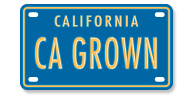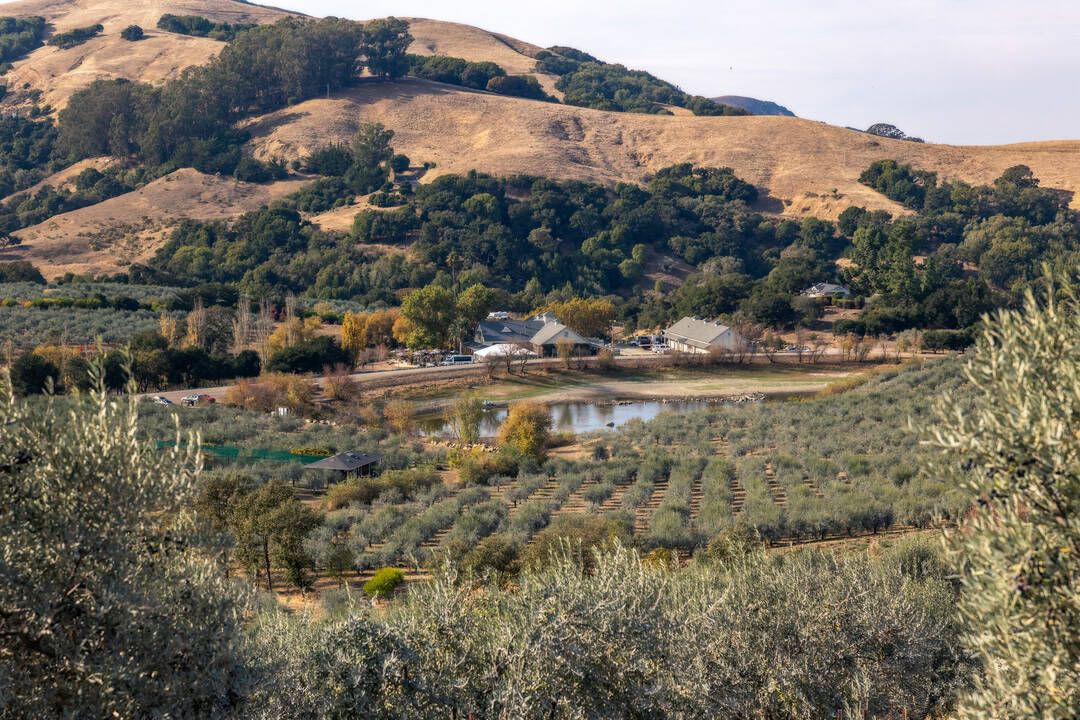McEvoy Ranch: Olive Oil and the Heiress
McEvoy Ranch, a small Petaluma olive oil producer, garners plenty of press. They were included in Sunset Magazine’s “Best Tasting Experiences in the West,” and their olive oil body butter made Oprah’s iconic “Favorite Things” list. So, why does this relatively small ranch get so much media attention? Sure, the location is stunning and many consider McEvoy Ranch one of California’s top olive oil producers – but the story behind the ranch is equally compelling.
Nan Tucker McEvoy: From heiress to…olive oil producer?
Nan Tucker McEvoy founded McEvoy Ranch in 1990. While Nan came from a privileged family, she was no stranger to hard work. Her grandfather established the San Francisco Chronicle, and Nan lobbied her father to allow her to work as a reporter at the paper. She eventually worked her way up to Chairman of the Board. Nan was also a founding member of the Special Olympics and involved in numerous charities and organizations. She’s been described as a trailblazer and a force of nature. When Nan set her sights on a goal, she was determined to succeed.
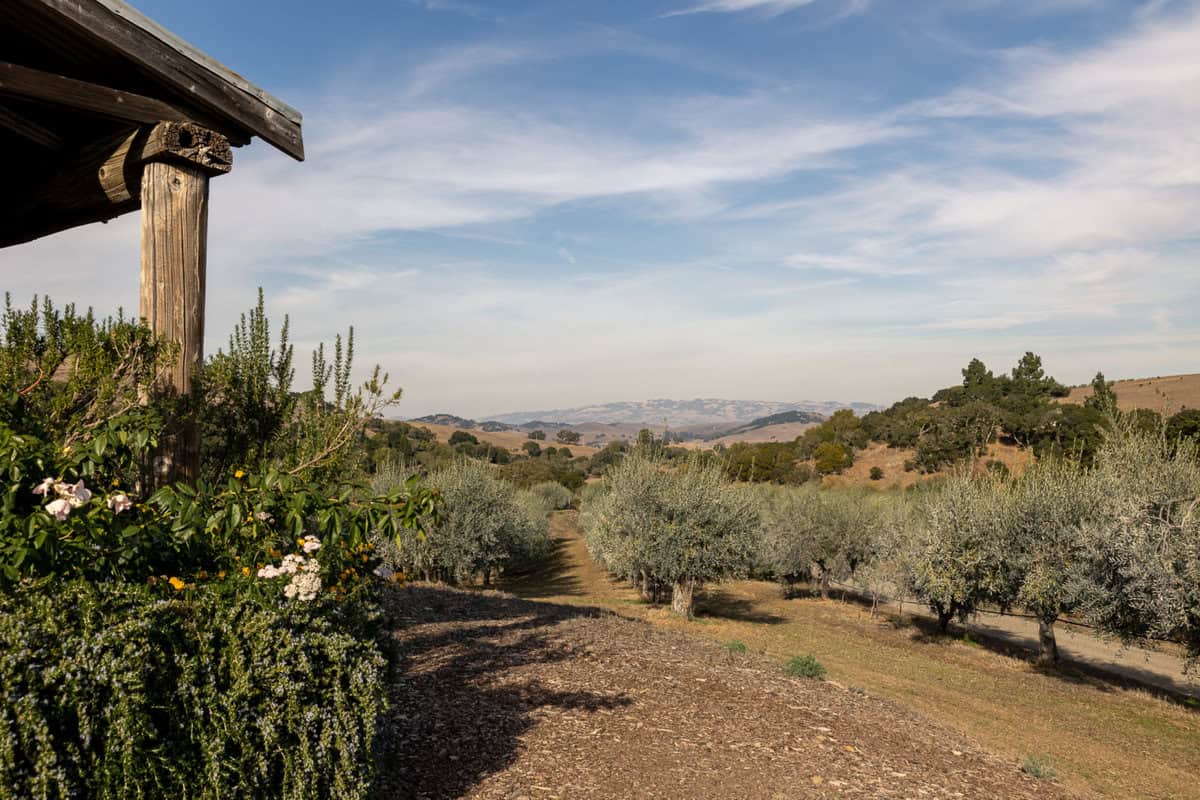
For example, when Nan first toured the Petaluma property that would become McEvoy Ranch, she was in her 60s. She fell instantly in love with the quiet, rolling hills, thinking it would be the perfect place for her pets and grandchildren to roam free. There was one hurdle – the 550-acre property had previously served as a dairy farm and was still zoned for agriculture.
Nan didn’t have any experience in agriculture, but this was an easy enough workaround. Her friends encouraged her to stick with something simple – maybe plant a few olive trees and be done with it – but Nan Tucker McEvoy doesn’t do simple.
Growing olives in Petaluma? They said it couldn’t be done.
Nan knew she didn’t want to plant winegrapes – that had already been done. She also ruled out raising cattle or anything else involving animals. When Nan’s son Nion gifted her a book, The Feast of the Olive by Maggie Klein, she instantly realized what she wanted to grow – olive trees, to produce oil. Never one to waste time, Nan immediately reached out to Maurizio Castelli, an Italian olive oil expert and agronomist. Within three days, Maurizio arrived in Petaluma to help Nan devise a plan.
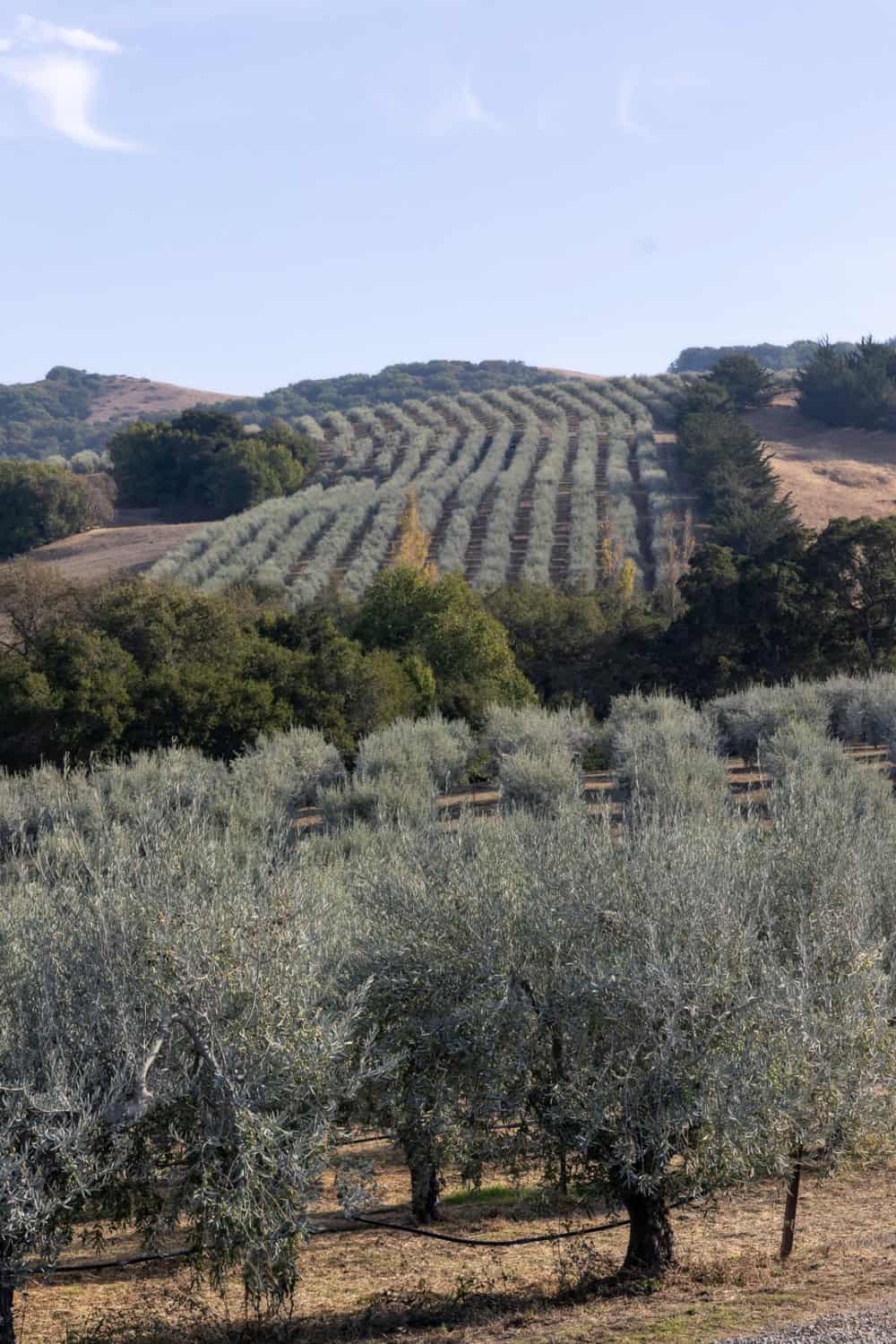
Local agricultural officials warned Nan against planting olive trees, stating that the soil in the area wasn’t well-suited to that particular crop. Maurizio disagreed, believing that certain varieties would thrive. With Maurizio’s guidance, Nan imported her first shipment of olive trees from Italy – 1000 trees, to be exact.
Maurizio’s guidance was invaluable; the olive trees flourished in the ranch’s fertile soil. By 1995, McEvoy Ranch had successfully produced its first batch of olive oil. Countless awards and accolades followed. Nan’s friends later commented that this was no surprise, claiming, “Everything she did, she did right.” Her son Nion took over the operation in 2014, and a year later, at the age of 95, Nan passed away.
How is olive oil made at McEvoy Ranch?
We recently toured McEvoy Ranch, eager to explore the breathtaking property and learn more about the operation. Samantha Dorsey, President of McEvoy Ranch, served as our tour guide. She explained that premium olive oil starts in the orchard and that McEvoy Ranch takes great care to produce the highest quality olives. All of their orchards are certified organic and farmed sustainably.
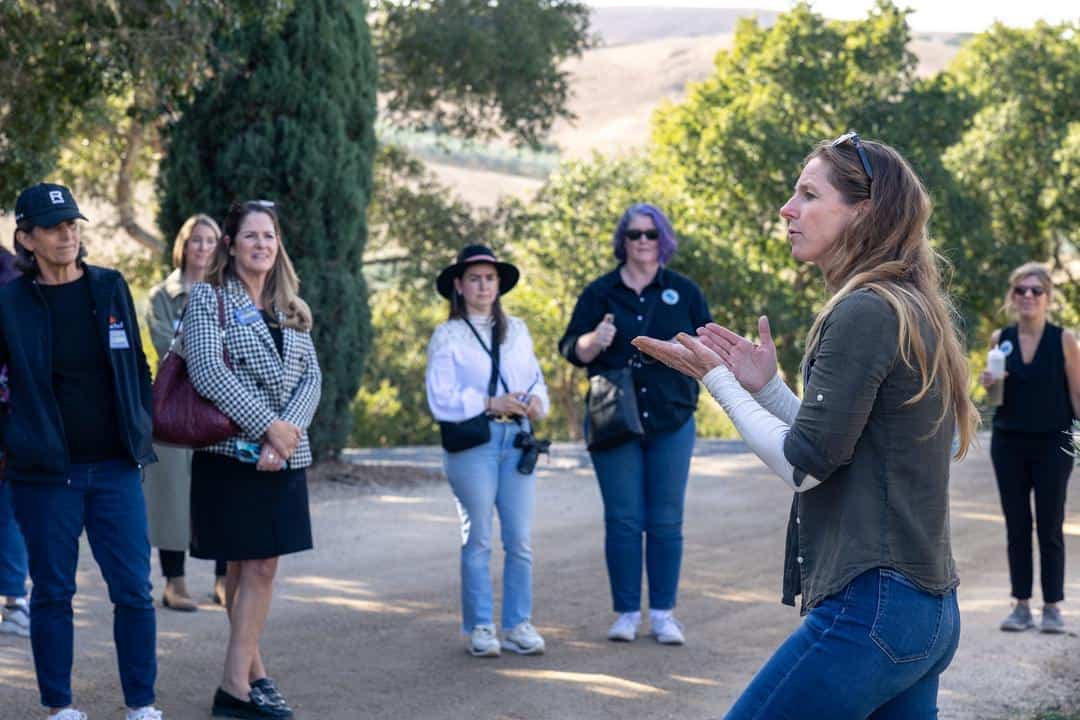
The olives are grown and milled onsite, ensuring the freshest oil possible. “One of the keys to quality is getting the olives from the tree down to the mill as quickly as possible,” Samantha commented, “That’s part of why I think we’re able to make exceptional olive oil – we have a mill right here in close proximity. We’re able to mill within hours of picking the fruit. Once you pick the fruit, it’s not gonna be better. Olive oil is not like wine. It doesn’t improve with age. The faster you can make it into oil, the better it is.”
How do you tell when the olives are ripe?
Walking alongside the orchard, Samantha paused and reached into a tree, plucking an olive from its branches. She noted that some olive oil producers rely on lab analysis to determine whether olives are ready to harvest.
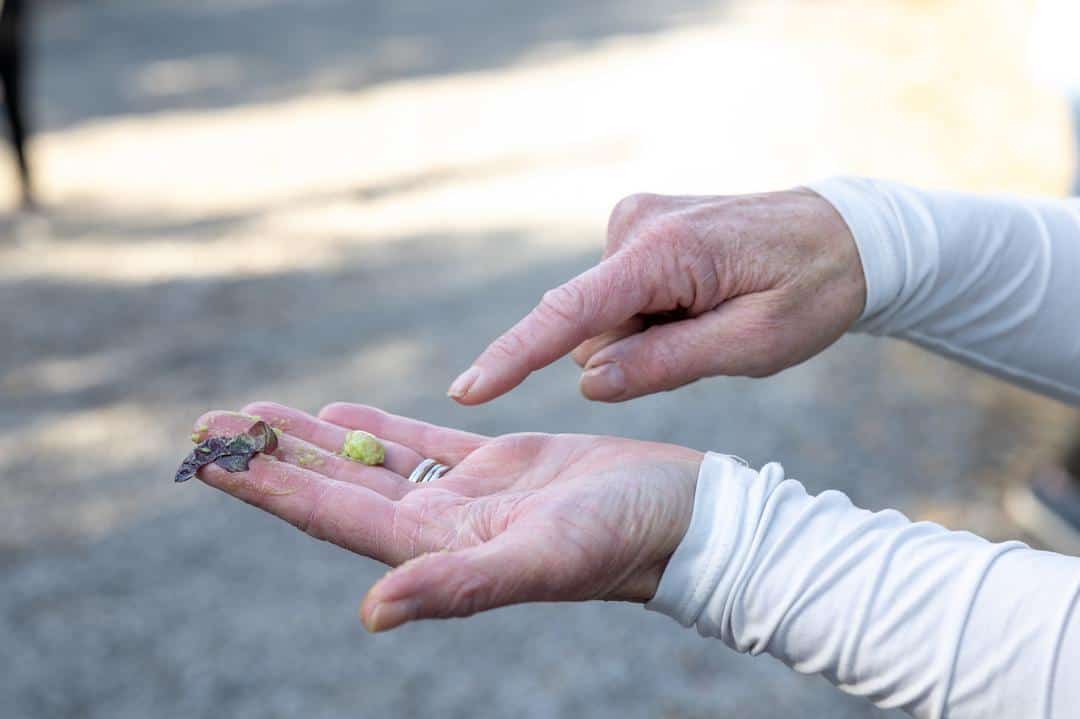
Samantha, however, explains with a big smile that she has a different technique – which she laughingly describes as “the squeezy test”. The “squeezy test is…you squeeze the olive.” she says, holding the olive between her fingers and beginning to squeeze.
“It feels greasy, it feels oily. That’s good, it means that the oil accumulation has happened. Oil accumulation happens at the end of the (growing) process. There’s bloom in May, and then there’s cell division, cell enlargement, all the way up to pit hardening in August. After pit hardening, you have cell enlargement and oil accumulation for the rest of the season. It’ll top out at around 40% oil accumulation.”
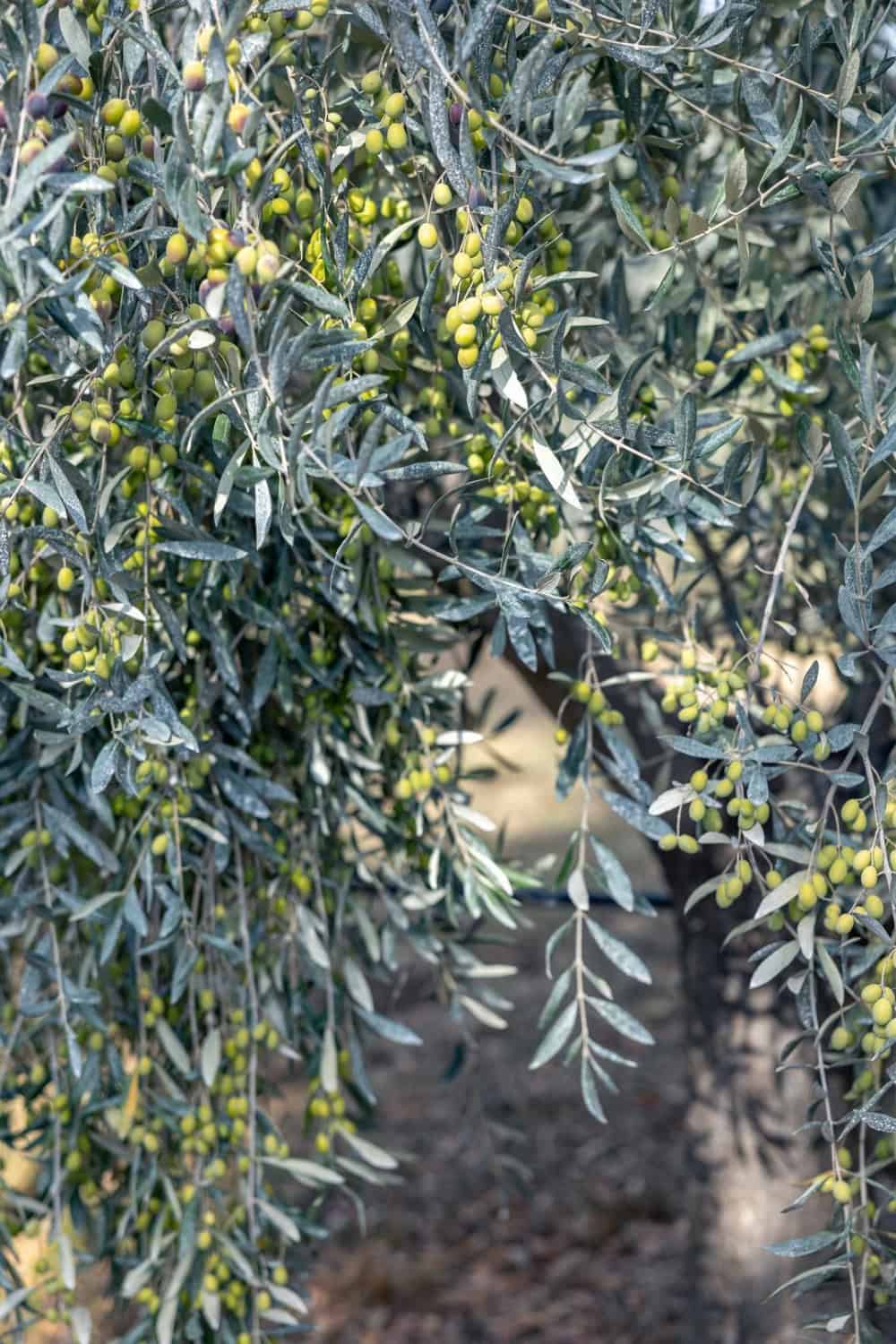
Does color indicate whether an olive is ripe?
With many crops, color is a good way to indicate whether the crop is fully ripened. Samatha states that this isn’t the case with olives: “It does obviously go through a color change but color is a physiologically different process than oil accumulation. So, the color will have more to do with how it will taste than how much oil there is.”
From the orchard to the mill
Once the olives are fully ripe, they are hand-harvested and immediately transported to the mill. Samantha led us into the viewing area, walking us through the process of making olive oil.

“The olives are crushed up – flesh, pit, everything – and made into a paste. The paste goes through a malaxer, and the malaxer is where all the flavors develop. That paste goes through the centrifuges – the centrifuges are kind of the modern press. Nobody presses their olive oil anymore. You used to put the paste on old mats, and then you would literally press it out. It’s not hygienic, and it’s not very efficient. Now, everyone uses centrifuges. Because the oil, the water and the flesh of the olive are all different densities, they come out at different parts of the centrifuge. Then it goes to the polisher, where the last little bit of water is wicked out. If that water is left in with the oil, it will make it unstable. We want the most stable products possible.”
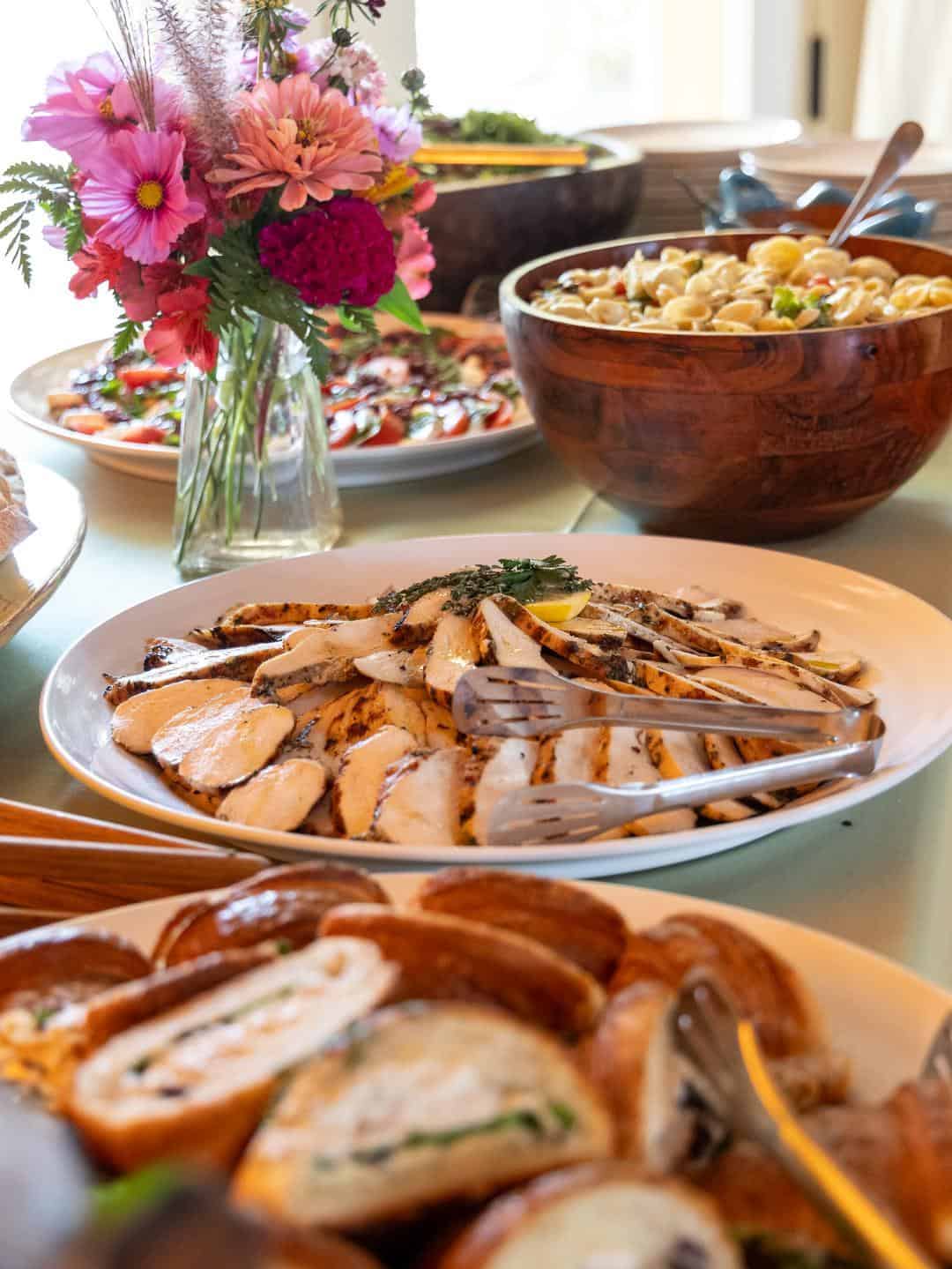
Can you cook with olive oil?
“Olive oil is really the best fat you can consume. It’s filled with polyphenols, compounds that have significant anti-inflammatory properties. It has a smoke point of about 405 degrees, but -really, what’s much more relevant to the stability of the oil is the oxidative stability. Because there are so many antioxidants in EVOO, more than coconut oil, avocado oil, soy corn or vegetable oils, it is more stable in the face of heat than most other oils. So, this misnomer about not being able to cook olive oil is just fantastic marketing by the other oils.” – Samantha Dorsey
How to taste olive oil
After our tour of the orchards and mill, olive oil tasting was next! We walked up a long gravel pathway to a charming Victorian house. Along the way, Samantha pointed out a few of the sculptural pieces from the McEvoy’s art collection. Then, we strolled through the ranch’s technicolor culinary garden that produces fruits, vegetables, herbs and flowers.
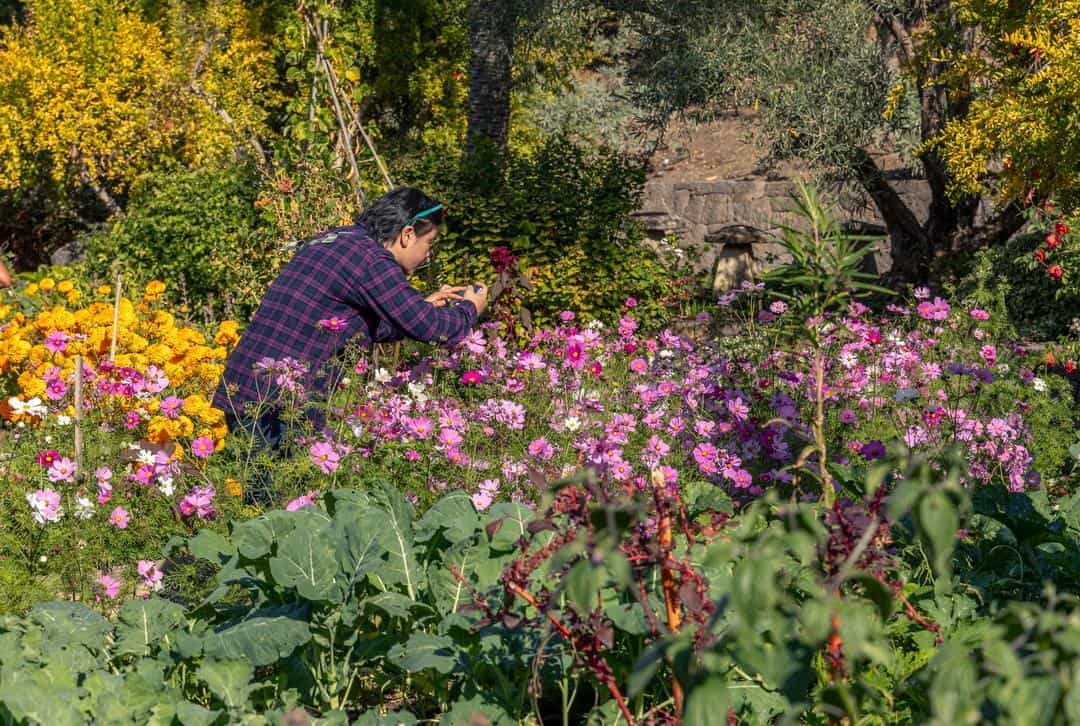
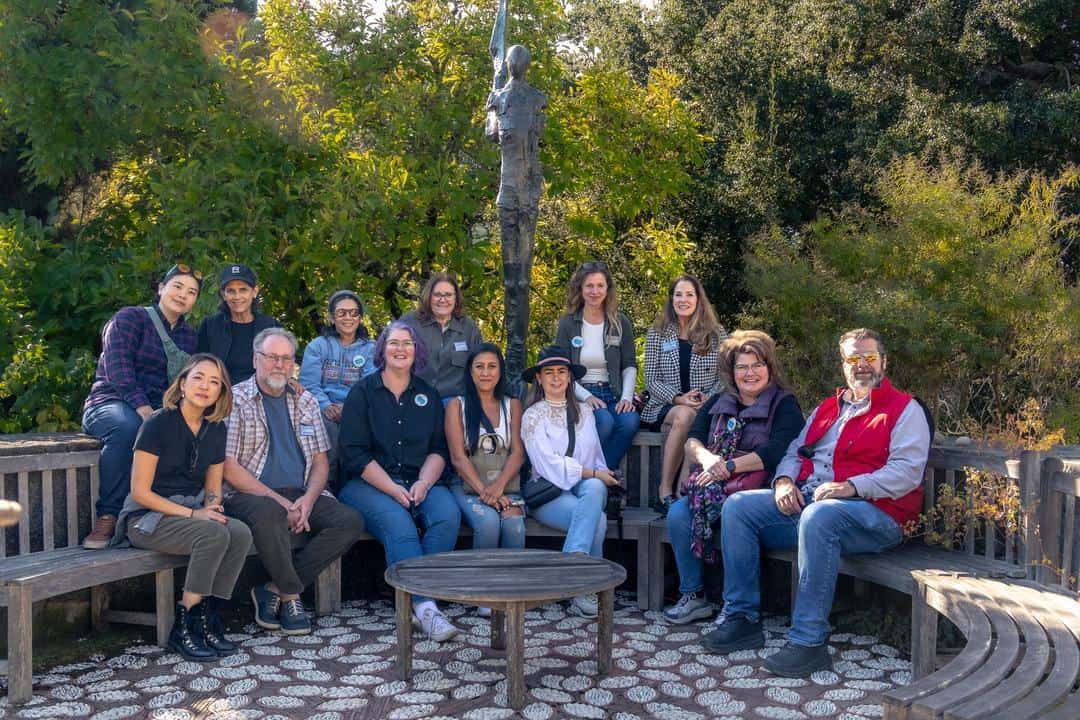
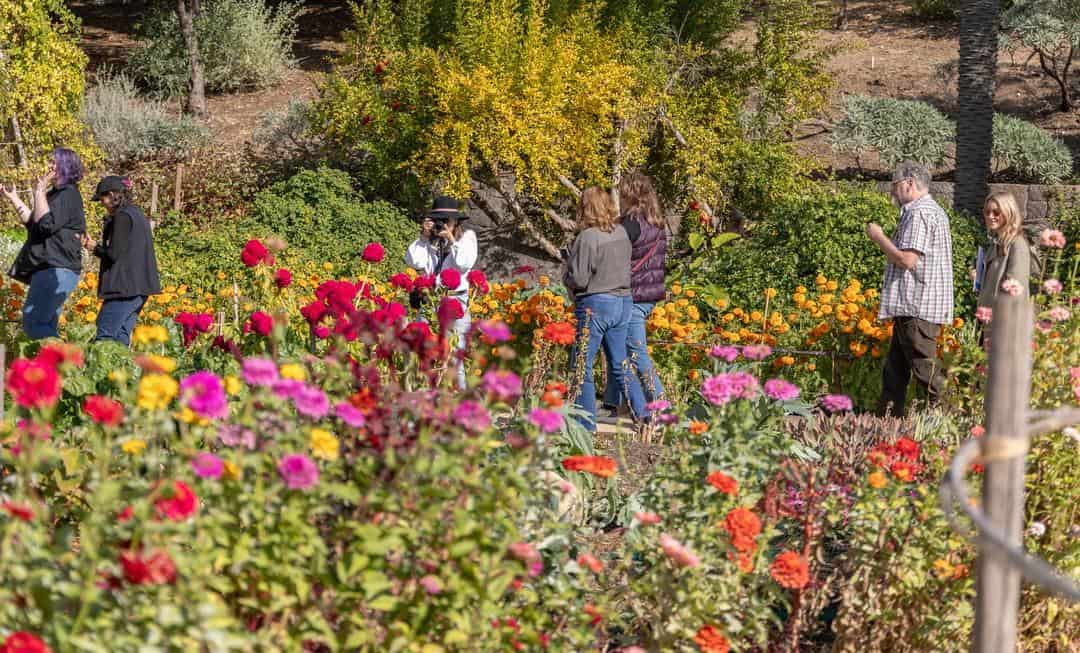
Upon entering the Victorian, we walked past a table piled high with pasta, caprese, salad and grilled chicken (some of which were made with ingredients from the garden!). Lunch would have to wait, though, until after our olive oil tasting.
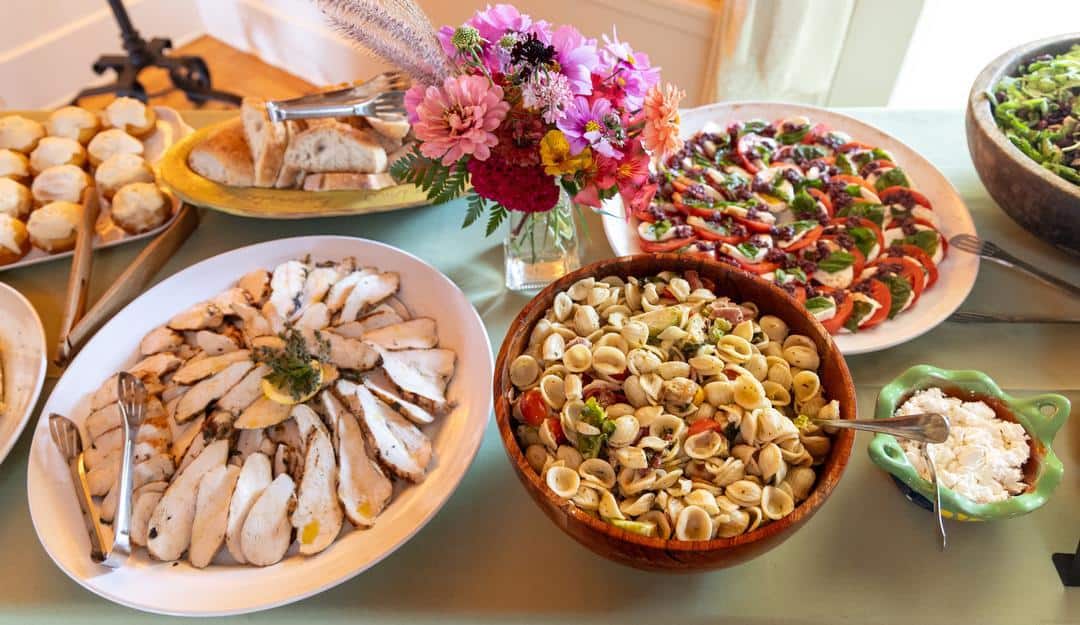
The first oil on the tasting was McEvoy Ranch’s extra virgin olive oil, their highest quality oil. Extra virgin olive oil is physically extracted (rather than chemically extracted) and meets strenuous sensory and laboratory chemical standards.
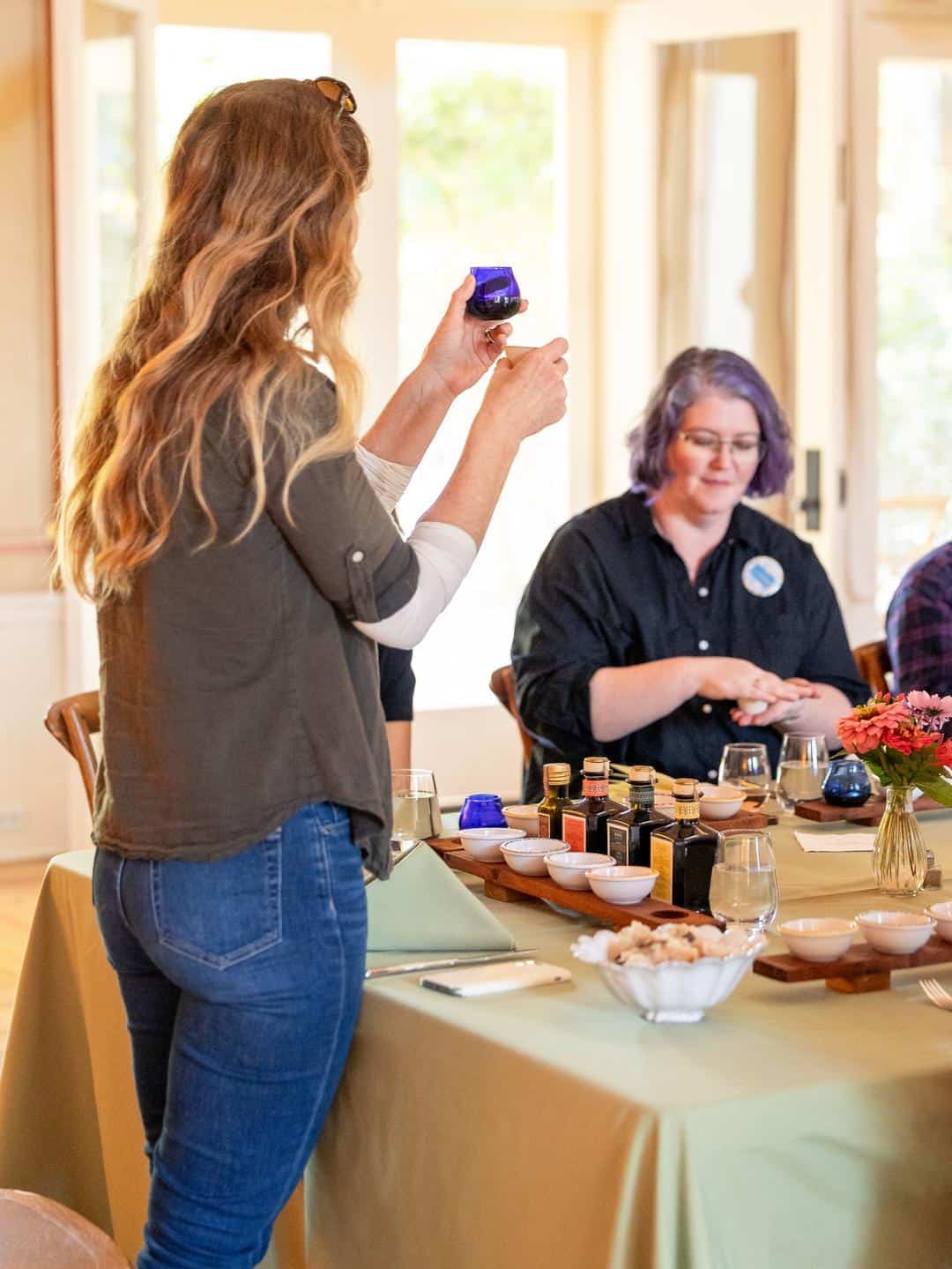
We started with a blue tulip cup – the kind used to judge olive oils. Samantha smiled, “The glass is blue, so you’re not biased by the color of the oil. While color can be a nice indicator, it doesn’t necessarily determine the quality of the oil. This allows us to taste it without being biased by the visual. The tulip glass, like a wine glass, captures the aromatics so that you can sniff all the deliciousness before you taste it.”
Step 1: Warm it up
The first step to olive oil tasting is holding the cup in one hand and capping the top with the other hand. This warms the olive oil and traps the aromatics in the glass, so tasters can determine whether the oil smells fresh.
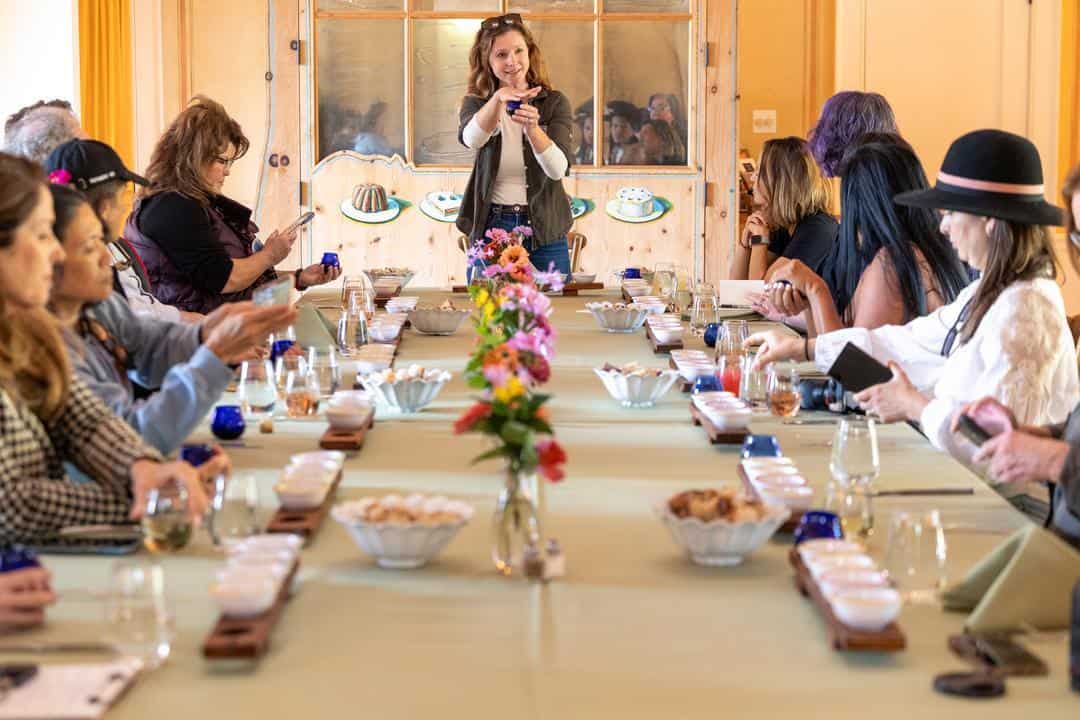
Step 2: Smell the oil
Next, tasters should release their hands from the top of the glass and smell the oil to ensure that it’s fresh. Samantha notes, “I feel like a lot of people are really intimidated by olive oil. Like, ‘How do I know if it’s good?’” Laughing, she continues, “You know, no questions if they know if milk is good or not? If it smells fresh, it tastes fresh, it’s probably fine. Olive oil can have lots of gorgeous characteristics, but mostly, it just needs to smell and taste fresh. Everything after that is just gravy and nuance.”



Step 3: Slurp it up
Once you’ve established that the oil smells fresh, the next step is to taste the oil. Tasters should pull the oil across their tongues, making a slurping sound to bring in some air. Samantha explained, “Aroma plus taste equals flavor. Getting the aromas in and then pulling the oil back and then getting that kind of retro nasal gives us the full experience of the oil.”
Extra virgin olive oil…and more

After our “official tasting”, we sampled four of McEvoy Ranch’s flavored co-milled oils. Their flavored oils are made by adding actual produce, crushing or “co-milling” the produce with olives at the beginning of the olive oil-making process. We tasted lemon, basil, jalapeno and chai spice – and each one was spectacular.
Our visit concluded with a lovely lunch and then a walk down the hill to the gift shop, where we could stock up on olive oil and the whipped body butter that made Oprah’s Favorite Things list. We drove back down the hill – calm, content and full. Sunset Magazine was right, McEvoy Ranch really is one of the best tasting experiences in the West.
Schedule a tasting
Now that you know the ins and outs of olive oil tasting, it’s time to start planning your trip to McEvoy Ranch. Petaluma is lovely, with plenty to do and see – like a quaint downtown full of shops and restaurants. It’s also just a short drive from better-known destinations like Napa, Sonoma and Bodega Bay. In fact, that’s one of the reasons why Nan was initially so taken with the property.
McEvoy Ranch offers olive oil tastings and ranch tours. Reservations are required.

If you’re in the area, be sure to stop by McEvoy Ranch’s Petaluma Outlet Store! If you can’t make the trip, join the Social Club and experience McEvoy Ranch from the comfort of your own home. Social Club members will receive quarterly shipments including McEvoy Ranch olive oils and other assorted culinary goods.
Article and photography by Hilary Rance.
